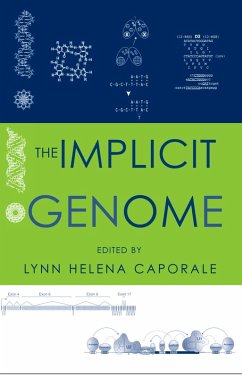For over half a century, we have been in the thrall of the double-helicaln structure of DNA, which, in an instant, revealed that information can be transferred between generations by a simple rule, A pairs with T, G pairs with C. In its beautiful simplicity, this structure, along with the table of codons worked out in the following decade, had entranced us into believing that we can fully understand the information content of a DNA sequence, simply by treating it as text that is read in a linear fashion. While we have learned much based on this assumption, there is much we have missed. Far from a passive tape running through a reader, genomes contain information that appears in new forms which create regions with distinct behavior. Some are "gene rich", some mobile, some full of repeats and duplications, some sticking together across long evolutionary distances, some readily breaking apart in tumor cells. Even protein-coding regions can carry additional information, taking advantage of the flexible coding options provided by the degeneracy of the genetic code. The chapters in this volume touch on one or more of three interconnected themes; information can be implied, rather than explicit, in a genome; information can lead to focused and/or regulated changes in nucleotide sequences; information that affects the probability of distinct classes of mutation has implications for evolutionary theory.
Dieser Download kann aus rechtlichen Gründen nur mit Rechnungsadresse in A, B, BG, CY, CZ, D, DK, EW, E, FIN, F, GR, HR, H, IRL, I, LT, L, LR, M, NL, PL, P, R, S, SLO, SK ausgeliefert werden.









